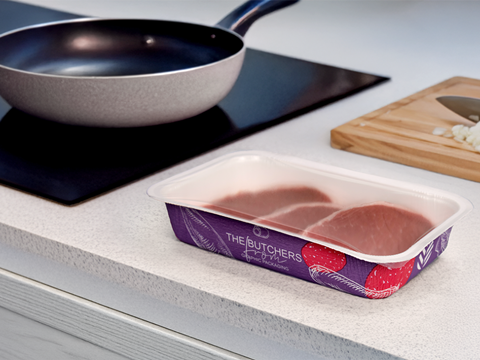
Graphic Packaging International’s PaperSeal Pressed modified atmosphere paperboard tray claims to reduce plastic content by around 85% compared to conventional alternatives and facilitate end-of-life recyclability.
Said to consist mostly of paperboard containing third-party certified wood fibre, the pack comprises a pressed paperboard tray and a high-barrier liner applied after tray formation. This feature is believed to prevent micro-leakage and match the shelf life of plastic trays.
The pack is said to achieve the benefits of a secure hermetic seal for modified atmosphere packaging applications – and, according to Graphic Packaging, it is recyclable in household waste streams.
PaperSeal Pressed is designed for compatibility with existing form-fill-seal equipment, resulting in a ‘cost-efficient’ production process, a smoother transition from plastic to paperboard trays, and increased operational efficiency for the packer.
Graphic Packaging adds that, whereas plastic trays can only be decorated with additional labels or sleeves, its paperboard alternative can be printed on both the outside and inside for on-shelf differentiation and impact.
As the newest instalment to Graphic Packaging’s PaperSeal tray portfolio for high-volume, price-sensitive fresh meat packaging, PaperSeal Pressed is expected to help brands and retailers introduce paper-based trays across their entry-level to premium fresh protein offerings, including pork, minced meat, and poultry.
“PaperSeal Pressed represents an exciting innovation in paperboard tray technology,” said Tom Garsed, general manager, Tray & Cup Solutions-International at Graphic Packaging. “Our engineers have solved what was previously considered an impossible challenge, creating an effective hermetic seal on a pressed paperboard tray.
“This creates new opportunities for brands and retailers to move away from plastic trays for fresh protein categories, where price sensitivity has made this a challenge.
“PaperSeal Pressed aligns with our goal of creating packaging solutions that are more circular than traditional alternatives by using primarily renewable resources.
“For our customers, it provides excellent functionality, operating seamlessly on existing tray sealing equipment, thus eliminating the need for capital investment, and it delivers optimal performance through the supply chain. For consumers, it delivers the convenient packaging they demand - effective, easy to recycle, and containing less plastic.”
Elsewhere in the range, Graphic Packaging’s PaperSeal Shape tray for Pilgrim’s Europe and Sainsbury’s has been nominated for a Sustainability Award under the Renewables category. The winners will be announced at an awards dinner taking place at this year’s Sustainable Packaging Summit in Utrecht; tickets are available here.
In similar news, Coveris recently unveiled its own board-based MAP tray for the meat, fish and poultry sector. This solution is thought to reduce plastic by 90% whilst maintaining recyclability and shelf-life.
Graphic Packaging also intends to help foodservice operators align with the requirements of the Single-Use Plastics Directive with a new portfolio of paperboard sushi packaging. Each of its formats can reportedly be designed for recyclability in European household waste streams.
If you liked this story, you might also enjoy:
The ultimate guide to the Packaging and Packaging Waste Regulation in 2025
How are the top brands progressing on packaging sustainability?
Everything you need to know about global packaging sustainability regulation in 2025
The key to increasing the use of reusable packaging in supermarkets

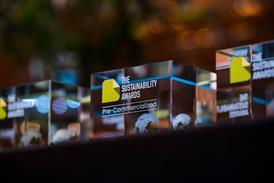
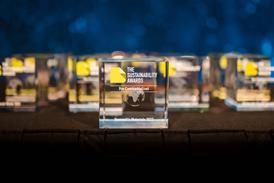
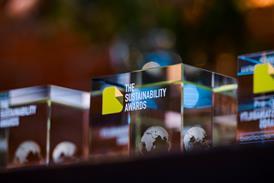

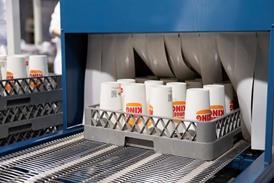












No comments yet